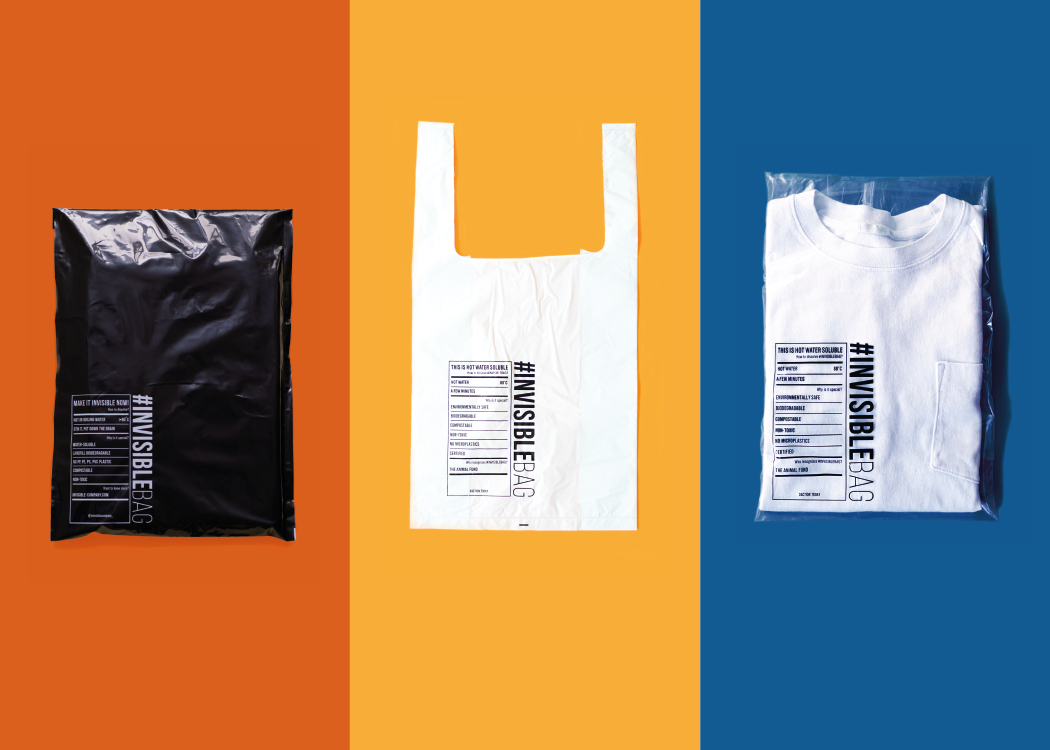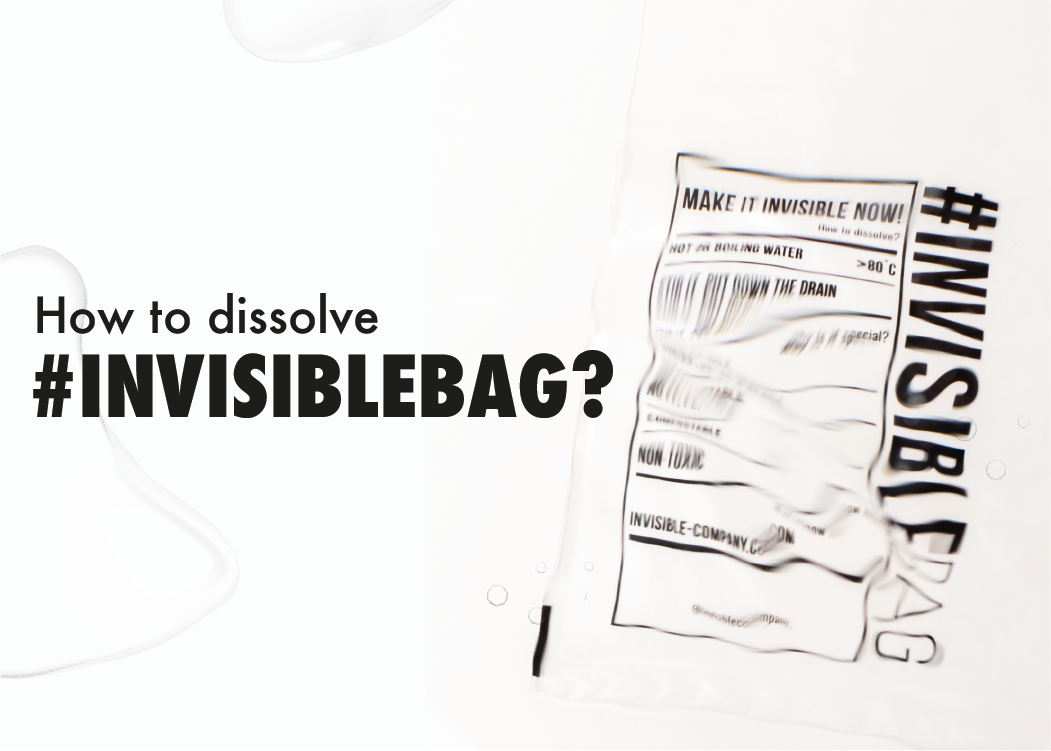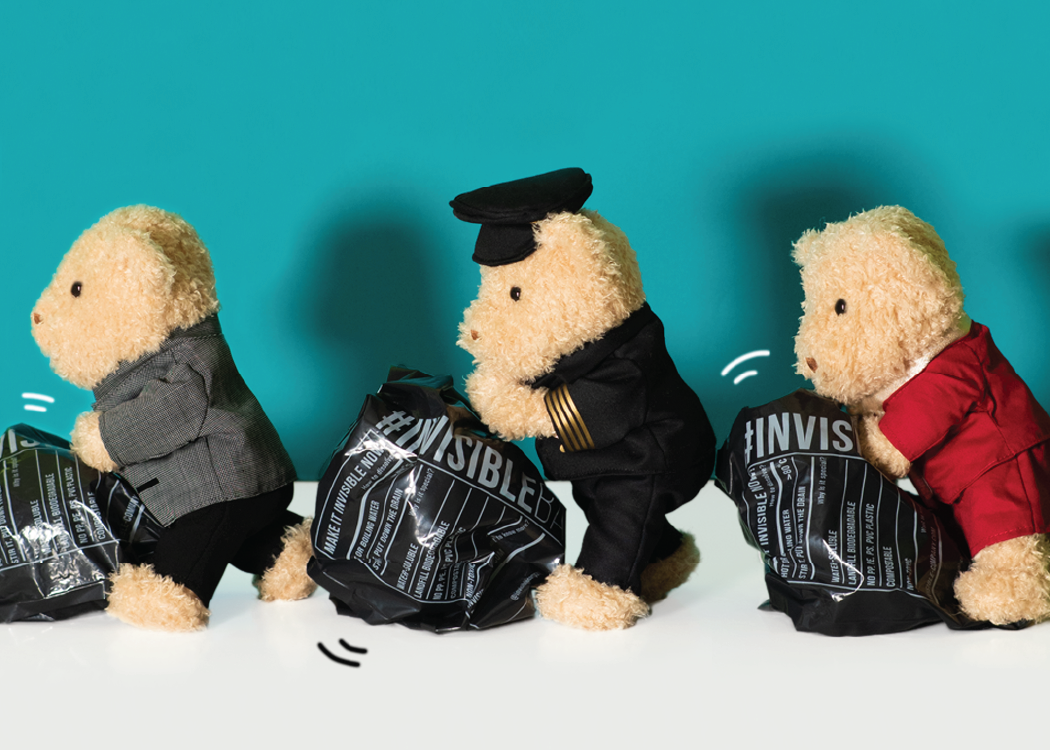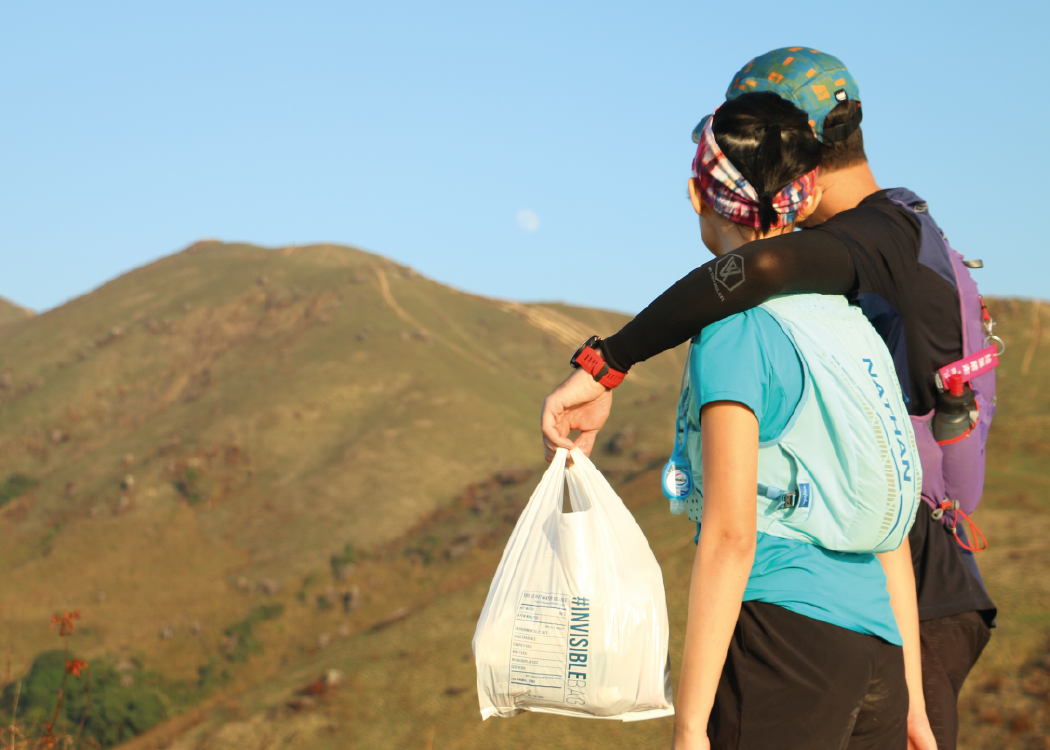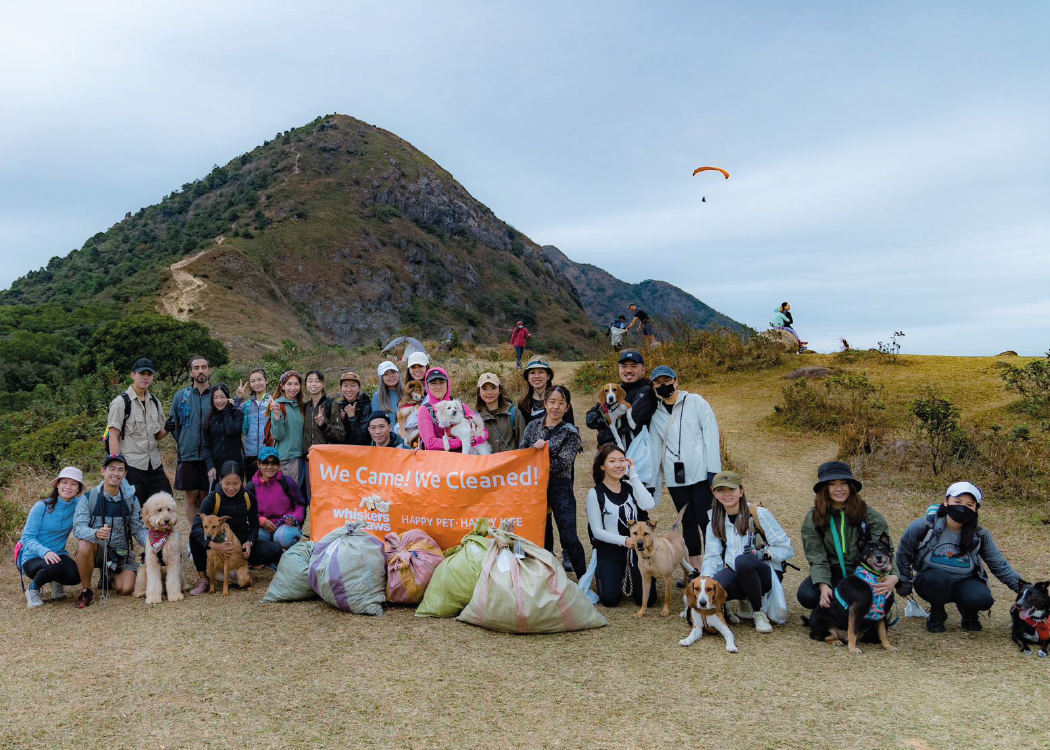FAQ
Whether you've got questions about product features, environment impacts, or flushing systems — we've got you covered!
#INVISIBLEBAG 101 | We Care About the Environment | Product Usage, Storage & Customization | #INVISIBLEPOOBAG | #INVISIBLEPUFF
#INVISIBLEBAG 101
#INVISIBLEBAG is water-soluble, compostable, biodegradable, proven to be non-toxic and leaves no harmful residue on earth. It does not contain PP, PE, PS, PVC plastic, proven by the FTIR analysis, does not form microplastic. It is an alternative solution for manufacturers and brands to replace the conventional plastic packaging.
#INVISIBLEBAG is made of a water-soluble and biodegradable combination of Polyvinyl Alcohol (known as PVOH), starch, glycerin and water. We also use eco-friendly ink, which does not contain heavy-metal ions or benzene. Proven non-toxic, #INVISIBLEBAG does not have chronic toxicity or estrogen, and is non-harmful to the environment.
One of the primary ingredients, Polyvinyl Alcohol (PVOH), is a water-soluble and biodegradable synthetic polymer. It was invented in the 1920s by German Scientists, Hermann and Haehne by hydrolyzing polyvinyl acetate in ethanol with potassium hydroxide. It was first industrially produced in Japan, and has mostly been used for medical purposes, embroidery, garment, personal applications, agricultural films and more since the 1960s, such as medicine capsules and laundry detergent pods.
We recommend dissolving* it in 80℃ hot water or above. Simply put the bag in a container and pour boiling water on top, after a few minutes it will have dissolved. After the dissolution, you can pour the remaining liquid down the drain where the wastewater will be treated at a sewage plant. After being consumed by microorganisms, it will completely break down to only carbon dioxide and water, with no formation of microplastics. #INVISIBLEBAG also dissolves in cold or room temperature water, but at a slower rate.
*Before dissolving #INVISIBLEBAG garment bags or mailer bags, please cut and dispose of the adhesive tape strip.
We Care About the Environment!
We have completed the FTIR analysis, proven that #INVISIBLEBAG does not contain PP, PE, PS, PVC Plastic.
While PVOH has a similar long polymer chain structure as conventional plastic like PP and PE, making it resemble a plastic from a chemical perspective, the key distinguishing factor is PVOH’s solubility in water and its biodegradability.
PVOH is a synthetic polymer with a carbon chain that contains hydroxyl groups, making it hydrophilic, soluble in water, and biodegradable. This allows PVOH to be broken down by microorganisms in soil or water, converting it into carbon dioxide, water and biomass. This water solubility and biodegradability sets PVOH apart from conventional plastics like PP and PE, which are hydrophobic and water-insoluble, and not readily biodegradable.
As a result, PVOH is categorized as a synthetic polymer, rather than a conventional plastic.
We have partnered up with various experts in the fields of chemistry and engineering, and according to literature, PVOH is recognized as a water-soluble and biodegradable synthetic polymer. This means it is water soluble and is also able to be biodegraded by microorganisms, breaking down into carbon dioxide and water with no trace of microplastics.
So what happens when #INVISIBLEBAG dissolves? Once it is dissolved and the solution has been poured down the sink or toilet, the remaining residue continues to breakdown via microorganisms in our water treatment facilities. Other conventional plastic polymers (PP, PE, PS, PVC) may biodegrade but this process can take decadesssss and even then, they will fragment into microplastics, which end up in our oceans and waterways.
The residue that remains, is due to the time it takes for the PVOH material to go through hydrolysis. The simple answer is; they are not microplastics so you don't have to worry. The PVOH polymers will break down into smaller individual molecules, and will not have a physical solid structure, unlike microplastics. The dissolved PVOH will then react with the microorganisms to be completely turned into harmless CO2 and water.
#INVISIBLEBAG is non-toxic proven by EEQ and OECD 208 tests; whilst the FTIR analysis also shows that it does not contain PP, PE, PS, PVC plastic. In the EEQ test, our bags show no estrogenic activity and are confirmed to be environmentally safe, with no trace of harmful elements to humans, animals or nature.
We appointed Vitargent to perform the tests on #INVISIBLEBAG, a biotechnology lab testing company based in Hong Kong. Their EEQ test uses modified medaka embryos with jellyfish DNA, which is cruelty free, to detect the environmental estrogens and chronic toxicity.
Furthermore, we appointed the quality assurance provider, Intertek, to perform an OECD 208 (Studies toxicity level in plants after a material biodegrades in testing soil) on #INVISIBLEBAG which proved that it has no negative effects for germination rate or plant growth.
#INVISIBLEBAG has been tested under ASTM D5511 requirements to determine the anaerobic biodegradation of #INVISIBLEBAG under high-solids anaerobic-digestion conditions and the result shows more than 85% biodegradation in 90 days.
#INVISIBLEBAG is proven to biodegrade 85% - 95% after a 90 day period under high-solids anaerobic-digestion conditions, which was certified by the US Standard ASTM D5511. It is also certified compostable according to the US Standard ASTM D6400 and the European Standard EN13432.
The ASTM D5511 determines whether a material is biodegradable under high-solids anaerobic-digestion conditions. The result shows more than 85% biodegradation in 90 days.
While the ASTM D6400 is the North American equivalent of the European EN 13432, any material certified with ASTM D6400 and EN13432 is compostable, whereby 90% or more of the material will be converted to carbon dioxide (CO2) by microorganisms within 180 days in ideal composting conditions. No harmful residues are left behind and the remaining share is converted into water and biomass.
We use environmentally friendly ink containing no heavy metals, benzene or ketone. The estrogen equivalent (EEQ) test confirmed our ink to be environmentally safe and non-toxic. Be aware of excessive rubbing may cause the ink to run.
Carbon black is used in the #INVISIBLEBAG mailer, it has been classified according to OSHA HCS [Occupational Safety & Health Administration] to not be considered toxic and as an eco-toxicological endpoint.
Since #INVISIBLEBAG is water-soluble, it does not enter the recycling program. Our bags can be reused before being dissolved in hot water or via composting (if there are industrial composting facilities in your city) in order to reduce your carbon footprint.
Yes, our #INVISIBLEBAG transparent garment bag, mailer bag and shopping bag are Lomi approved, they have been tested, and the results showed that #INVISIBLEBAG can be composted and fully broken down by Lomi Composter.
Lomi is a countertop, kitchen composter that quickly breaks down organic waste such as household food scraps into small fragments that can be used as soil, mix with compost within a few hours. For more information about Lomi and Lomi Approved Products.
Here at Invisible Company headquarter, we all actively make the effort in our day to day lives to reduce our individual carbon footprint. When it comes to production, some carbon emissions are unavoidable (as is the case when creating almost any product) so we try to offset our bags’ carbon footprint as much as possible in various ways, such as by supporting foundations which give back to the Earth, making responsible lifestyle changes, and by creating an active community of Ploggers to pick up trash in nature.
Product Usage, Storage & Customization
We recommend only carrying dry items. Avoid putting wet items such as liquids, meat, seafood, frozen food and such. The load capacity depends on the thickness and specifications of #INVISIBLEBAG. Our standard #INVISIBLEBAG Shopping Bag (25cm x 45cm) is 30 microns which can carry about 3-4 kgs worth of dry items.
When compared with general plastic bags (typically 15-20 microns), #INVISIBLEBAG has high tensile strength as strong as plastic due to its material characteristics.
In order to keep #INVISIBLEBAG in good condition, it is delivered with protective outer packaging (please reuse and recycle it), if outer packaging is not opened, shelf life is up to 24 months, depending on the storage conditions, some can up to 36 months. Please store in a cool and dry place, and avoid direct sunlight.
When #INVISIBLEBAG is packed with your product, it is suggested to store in a clean room with good air circulation and natural ventilation. We suggest storing it in a temperature range between: 7°C~30°C, humidity: 20%~70%. Store at a cool and dry place, away from high temperature & humid, direct sunlight. If stored in the suggested conditions, shelf life is up to 24 months, it varies depending on the storage environment. #INVISIBLEBAG will biodegrade when it meets these elements: microorganisms, humidity and high temperature together.
When packing products in #INVISIBLEBAG for a long sea shipment, we recommend using a master polybag. This will ensure a safe transit and full protection of the goods. You can request a call with our team to understanding the handling guidelines.
Yes, this is perfectly normal. Sometimes our bags smell a bit acidic when they are first removed from the outer packaging but this will not transfer to your products. You can leave your bags in a well-ventilated room and the scent will fade.
As #INVISIBLEBAG is water-soluble and hydrophilic, please remember not to expose it to rain and carry an umbrella to protect both the bag and its carried items. When it meets condensation or light raindrops, the bag will not break apart abruptly, however, its tensile strength will be slowly decreasing.
A small splash of fresh water will not affect the loading capacity (3-4 kg in normal conditions), though its appearance will look softened and wrinkled. But if exposed to heavy rain, its strength and structure will quickly weaken and will tear apart.
Yes, you can customize #INVISIBLEBAG with your own size, thickness and printing design. We have some creative ideas and collaboration with Distinctive Actors here.
The MOQ is 150kg of the material so the quantity will depend on size and thickness selected. To know how many bags can it convert into, please email us: hello@invisible-company.com to have the quotation.
It takes 5-7 weeks from product design to finished goods, excluding the delivery time. Otherwise, we have ready-made #INVISIBLEBAG and stock program available, please visit: www.invisible-company.com for more details.
It is a sad but true fact that plastic products are cheap to make and therefore cheap to sell. This is mainly due to the maturity of the industry (plastic started getting popular in the swinging 60s) and the fact that plastics are made from easily mass produced raw ingredients. By comparison, environmentally friendly products are still considered to be the new kids on the block and so have higher production costs, are made from more costly materials and still require strict certifications and extensive scientific research.
By becoming Distinctive Actors and switching to genuine environmentally friendly alternatives, like #INVISIBLEBAG, you not only reduce the amount of plastic entering our environment, but also increase the demand for such products which will help to lower overall costs. Follow us on our Instagram @invisiblecompany_ to stay up to date with our news and when we might be releasing new products!
#INVISIBLEPOOBAG
Firstly, #INVISIBLEPOOBAG is slightly thinner (27micron). Secondly, its ideal temperature to dissolve in for the fastest rate is 65℃, where as our #INVISIBLEBAG (transparent poly bag) dissolves at 80℃ and is a tad thicker (30 micron). Both bags will also dissolve in room temperature water, just at a slower rate.
#INVISIBLEPOOBAG is certified compostable according to the US Standard ASTM D6400 and the European Standard EN13432. However, since pet waste (e.g., dog or cat feces) might contain parasites, bacteria and pathogens, most industrial composting facilities do not accept it. Please check with your local council for further information.
The ideal way to dispose of #INVISIBLEPOOBAG and its contents is to trash it (where it will biodegrade in anaerobic conditions) or to flush it.
Livestock waste can be composted and transformed into useful soil conditioner or fertilizer. However, it must be stressed that the use of this form of compost is mainly for landscaping, golf course and race course maintenance, and the horticulture industry.
#INVISIBLEPOOBAG is certified compostable according to the US Standard ASTM D6400 and the European Standard EN13432. However, since pet waste (e.g., dog or cat feces) might contain parasites, bacteria and pathogens, most industrial composting facilities do not accept it. Please check with your local council for further information.
The ideal way to dispose of #INVISIBLEPOOBAG and its contents is to trash it (where it will biodegrade in anaerobic conditions) or to flush it.
As #INVISIBLEPOOBAG is water-soluble and hydrophilic, remember not to expose them to rain for a long time. If your bag does meet condensation or light raindrops it will not break apart abruptly, however its tensile strength will be slowly decreasing.
If you're unable to dispose of your pet poop bag and must carry it for a while, causing the waste to condensate or if your pet's waste is a bit...messy then it is possible the bag will significantly weaken. If this is the case, we recommend lining your bag with some eco-friendly tissue before picking up the poop and disposing of it in a pet waste bin.
Firstly, do not knot or tie the #INVISIBLEPOOBAG before flushing and only ever flush one bag at a time. If you are worried your toilet system will struggle, you could dispose of your bags in designated pet waste bins. We do not recommend using #INVISIBLEPOOBAG if your home is using a septic tank system.
Great news, offline shoppers! Besides our online shop, you can now find #INVISIBLEPOOBAG at the physical stores of our distinctive partners around Hong Kong; including Green Common, Green 360, Petpet Organic, Wise Pet and Common Room 337. Find the nearest store from our 'Where to buy' page here.
#INVISIBLEPUFF
So many different kinds! Ranging from dainty jewellery to smart gadgets, our #INVISIBLEPUFF packing peanuts are made from corn starch and glycerin, meaning they do not carry any electrostatic charge (unlike styrofoam peanuts) so even your sensitive electrical products can be safely packed.
Yes! As #INVISIBLEPUFF packing peanuts are just a composite made out of cornstarch and glycerin, they will most definitely biodegrade in landfill conditions. Now you may wonder, how come a plastic cup made of corn starch (PLA) can’t degrade in a landfill? PLA is a biobased plastic polymer that is made via a more complex process that gives it more resistance to be used as a commercial material. This however, means that they require specific high temperatures and conditions in order to fully biodegrade.
The water-soluble packing peanuts may become a little sticky in very humid conditions, but they will not damage your products!
Our little pieces of water-soluble #INVISIBLEPUFF are a bit softer than regular polystyrene peanuts, we recommend adding a few layers of #INVISIBLEPUFF underneath or around your product, particularly when it comes to heavy items.


